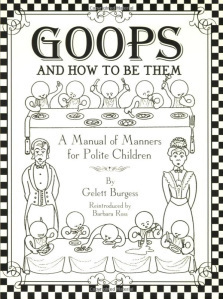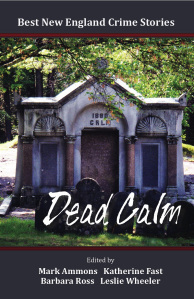Barbara Ross's Blog, page 15
November 25, 2014
All the Barbara Rosses
by Barb, baking pies and getting excited about Thanksgiving
 Barbara Ross is my real name, though I often think if I’d known then what I know now, I would have published under a pseudonym. No, the problem isn’t shelf placement. Ross does put me on one of those very bottom shelves you can hardly peer into at Porter Square, my local bookstore in Massachusetts. But it pops me onto an excellent eye-level shelf at Shermans, my local bookstore when I’m in Maine.
Barbara Ross is my real name, though I often think if I’d known then what I know now, I would have published under a pseudonym. No, the problem isn’t shelf placement. Ross does put me on one of those very bottom shelves you can hardly peer into at Porter Square, my local bookstore in Massachusetts. But it pops me onto an excellent eye-level shelf at Shermans, my local bookstore when I’m in Maine.
The problem is there are way, way too many Barbara Rosses. I’ve been aware of this for a long time. It’s been my name all my life. I’ve never used my husband’s surname. When I was a kid, there were five Barbara Rosses registered at the local pediatric practice. In adulthood, for a dozen or more years, the local PBS station has mined some humor, and probably some dollars, but having their fundraising calls to me made by another Barbara Ross. Locally, there’s also a Barbara Ross who’s a nurse, whose class reunions I am regularly invited to, and a Barbara Ross who’s an accompanist, who must arrive at a lot of empty rehearsal halls because the calls cancelling the engagements are sitting, unheeded, in my voice mail.
 As to the Barbara Ross authors, there’s one who writes for the Daily News and other outlets in New York City who has one or more by-lines every day. And there’s Barbara Ross, the modern-day adapter of the classic children’s books, including Goops and How to Be Them: A Manual of Manners for Polite Children. Then there’s the Barbara Ross who co-wrote Anaesthetic and Sedative Techniques for Aquatic Animals and the one who co-wrote Stony Brook University Off the Record: Students Tell It Like It Is. And the one who wrote Sick And Tired Of Being Sick And Tired.
As to the Barbara Ross authors, there’s one who writes for the Daily News and other outlets in New York City who has one or more by-lines every day. And there’s Barbara Ross, the modern-day adapter of the classic children’s books, including Goops and How to Be Them: A Manual of Manners for Polite Children. Then there’s the Barbara Ross who co-wrote Anaesthetic and Sedative Techniques for Aquatic Animals and the one who co-wrote Stony Brook University Off the Record: Students Tell It Like It Is. And the one who wrote Sick And Tired Of Being Sick And Tired.
I am none of these Barbara Rosses.
Ross is the 80th most common surname in the United States and Barbara is the 4th most common given name, so I suppose this is all inevitable. Barbara has never had a resurgence, like some other “a” ending names like Isabella, Anna, Sophia, so all Barbara Rosses are between age 50 and death. I have a Google alert on my name and am regularly sent my own obituary.
One of the things I’ve noticed about Barbara Rosses is that while we are rarely famous, we are more frequently “fame-adjacent.” Here’s a run-down so you’ll see what I mean.

Barbara Ross-Lee
Barbara Ross-Lee: If you Google Barbara Ross, this is the one that will pop up. She is an osteopath and is currently vice president for health sciences and medical affairs and dean of the School of Allied Health and Life Sciences at the New York Institute of Technology. She is one of only six or seven female medical school deans and the first and only African-American woman to lead a medical school in the US. Pretty impressive, right? But even as the best known Barbara Ross, Dr. Ross-Lee is fame-adjacent. Her younger sister is the singer-actress-diva, Diana Ross.

Elizabeth Kubler-Ross
Barbara Ross Rothweiler: Another name you’ll find Googling, Dr. Rothweiler is a licensed psychologist, with board certification in neuropsychology and rehabilitation psychology. Again, not shabby. But she is also the daughter of Elisabeth Kubler-Ross MD, who wrote On Death and Dying, and defined the five stages of grief.
 Barbara Ross: Another Barbara Ross is an Illinois-based artist who is best known as the mother of Veronica Roth, the now twenty-six year-old author of the Divergent Trilogy, Divergent, Insurgent and Allegiant, which have sold over five million copies and have been made into a major motion picture franchise starring Shailene Woodley.
Barbara Ross: Another Barbara Ross is an Illinois-based artist who is best known as the mother of Veronica Roth, the now twenty-six year-old author of the Divergent Trilogy, Divergent, Insurgent and Allegiant, which have sold over five million copies and have been made into a major motion picture franchise starring Shailene Woodley.
Sisters, mothers, daughters. I don’t know what to make of all this fame-adjacentness, except to predict that someone close to me is going to become very famous.
I’ve always had a weird, dissociated relationship to my name. When people ask, “Are you called Barb or Barbara?” I answer “both,” but the truth is, I don’t know. I respond when called without consciously processing the word. I’m told that both I and my second cousin Barbara Jean are named for my mother’s, mother’s mother, but she died before my mother was born, and I’ve never actually confirmed that even was her name, since there seems to be some debate about it.
I’ve felt a little closer to Ross, which must be why I’ve kept it. There’s a Ross in MacBeth, and a coat of arms and a tartan. But one of the things I like best about it, is that between the Scottish diaspora, and the many people who’ve simplified German or Jewish or Russian or Polish or Italian or Spanish or even Japanese names to Ross, a Ross can be anyone from anywhere in the world.
So reader, what about you? Is your name common or un? Do you love it or hate it? Would you like to see it pop up as a character name in the next Maine Clambake Mystery? Leave a comment and let me know–it just might happen.
Filed under: Barb's posts Tagged: Barbara Ross-Lee, Divergent, Elizabeth Kubler-Ross, Goops, Maine Clambake Mystery, Veronica Roth

October 30, 2014
Everything Has Something Good in It
by Barb on yet another lovely New England fall day
I just bought this collage created by my fellow Level Best co-editor, Kat Fast.

Artist: Kat Fast
Watercolor with glaze
I blogged about Kat (or Kathy as I call her, or Katherine as she appears on the covers of the Level Best anthologies) just the other day, when we wrote about the people in our lifeboats.
I first saw the collage at a one woman show Kat had at the Weston Council on Aging, a group she’s been very involved with as a teacher and a volunteer. I was immediately taken with the picture aesthetically and emotionally. I loved its density, composition and vibrant colors. I loved how it contained the promise of spring and summer. And, it doesn’t hurt that I also believe in my core that anything with hydrangeas in it can’t be all bad.
But when Kat explained how the piece was made, I resonated with it intellectually as well. It came out of a class with one of her teacher/mentors who believed, “Everything has something good in it.” A painting that is a failure will always contain at least one successful element. One flower, or one tiny corner, or even just a streak of the perfect color green.
So she had them cut up some of those failed pieces and arrange the successful elements in a new composition.
The result, I think, is spectacular.
What an important lesson that is for all of us who create.
Just two days ago on the blog, Kathy Lynn Emerson explained how surrendered after 100 pages of a failed Elizabethan thriller, but then was able to carve two short stories out of it.
The ideas and images that speak to us are the ideas and images that speak to us, and sooner or later, if we keep at it, we will find a way to express them.
 The reason I call Kat “Kathy” is because we actually met, I hate to even think, it must be close to thirty years ago when we both worked at a company called Information Mapping. I left in the mid-90s and we lost touch, as people did in those pre-Facebook days. Then, one day, I was walking down the street in Harvard Square and there she was. “What are you up to these days?” she asked. “Oh,” I said, “I’m in this writers group. I’m writing a mystery.” “Really?” Kathy said. Because it turned out she was, too. She joined our group, and the rest is history. One of those serendipitous moments that changes several people’s lives.
The reason I call Kat “Kathy” is because we actually met, I hate to even think, it must be close to thirty years ago when we both worked at a company called Information Mapping. I left in the mid-90s and we lost touch, as people did in those pre-Facebook days. Then, one day, I was walking down the street in Harvard Square and there she was. “What are you up to these days?” she asked. “Oh,” I said, “I’m in this writers group. I’m writing a mystery.” “Really?” Kathy said. Because it turned out she was, too. She joined our group, and the rest is history. One of those serendipitous moments that changes several people’s lives.
At the opening of her show, Kathy spoke wonderfully, tying up into a tidy package a life she’s quick to agree has many disparate elements. She recognized each of her art teachers and told the central truth she had learned from each one, which I found very moving.
She also managed to tie in her editorship at Level Best via her story, “The Black Dog,” in Best New England Crime Stories 2012: Dead Calm, about an amateur artist, “not paying full fare at the movies” herself, who is initially rejected, then embraced by three elderly professionals in an advanced watercolor class. “The Old Cats” as they dub themselves, worry about housing and healthcare and the hundreds of paintings their children will eventually need to dispose of–until they come up with a plan that solves all those problems in one go and only depends on a little bit of fraud.
So here’s to the crafty old cats, and the mentors, and the little bit of good in all of our failures.
Filed under: Barb's posts Tagged: Best New England Crime Stories: Dead Calm, Kat Fast, Kathy Lynn Emerson

September 25, 2014
Maine Clambake Series Renewed!
by Barb, in Somerville, MA, where it’s indisputably fall
We Wicked Cozies have a tradition of announcing good news here on the blog. Julie Hennrikus announced her new Clock Shop Mystery series. And more recently, both Edith Maxwell and Liz Mugavero shared happy news with our readers.
I’m thrilled to announce that my Maine Clambake Mystery series has been extended for books 4, 5 & 6. I’m excited about this because I have so many more stories to tell about the Snowden family, Morrow Island and Busman’s Harbor, Maine.
The planned books take place in late fall, winter and early spring–or as we call them in Maine, in winter, winter and more winter. The resort town of Busman’s Harbor is very different in the off season.
The books are tentatively titled Fogged In, Iced Under and Elvered After.
 In Fogged In, the body of a stranger appears in the walk-in refrigerator of Gus’s restaurant. And we all know how Gus feels about strangers in his restaurant, much less dead ones. When the body yields no ID, Julia must help the police uncover the man’s identity and the mysterious reason for his visit to Maine.
In Fogged In, the body of a stranger appears in the walk-in refrigerator of Gus’s restaurant. And we all know how Gus feels about strangers in his restaurant, much less dead ones. When the body yields no ID, Julia must help the police uncover the man’s identity and the mysterious reason for his visit to Maine.
In Iced Under, Julia investigates her maternal ancestry and the disappearance of her mother’s cousin Hugh, who left Morrow Island on the eve of his twenty-first birthday and disappeared. She discovers some dark truths about her mother’s family that lead her to a modern-day case of murder.
 In Elvered After, a man is murdered in one of the Victorian bedrooms of the Snuggles Inn. He’s a Maine state official in town to regulate the local catch of elvers, the tiny, translucent baby eels that bring Maine fishermen as much as $2600 a pound and are sold to Asian farms to be raised for sushi. With high stakes, a short season, a limited number of highly-prized licenses and finite fishing grounds, the elver fishery provides plenty of suspects and reasons for murder. (I’m sure the publisher won’t let me keep the title because no one knows what elvers are, but it’s kind of perfect, isn’t it?)
In Elvered After, a man is murdered in one of the Victorian bedrooms of the Snuggles Inn. He’s a Maine state official in town to regulate the local catch of elvers, the tiny, translucent baby eels that bring Maine fishermen as much as $2600 a pound and are sold to Asian farms to be raised for sushi. With high stakes, a short season, a limited number of highly-prized licenses and finite fishing grounds, the elver fishery provides plenty of suspects and reasons for murder. (I’m sure the publisher won’t let me keep the title because no one knows what elvers are, but it’s kind of perfect, isn’t it?)
I’m working on Fogged In now, and can’t wait to find out what happens!
It’s hard to believe how much has happened since the first book in the series, Clammed Up, was published a year ago this month. Thank you for a wonderful year to friends, family, and Maine Clambake Mystery fans. I’ve been so honored by the reception these stories have found and hope you will enjoy the new books.

Filed under: Barb's posts Tagged: boiled over, clammed up, Elvered After, Fogged In, Iced Under, Maine Clambake Mystery, musseled out

August 28, 2014
Murder on the Orient Express
by Barb, who is home in Boston after two and a half blissful weeks in Paris
 I was excited last week when Julie posted her blog about one of the greats, Agatha Christie. There was even a bit of a discussion in the comments on that blog of Murder on the Orient Express.
I was excited last week when Julie posted her blog about one of the greats, Agatha Christie. There was even a bit of a discussion in the comments on that blog of Murder on the Orient Express.
I’m a long time Christie lover. Hers were the books I moved to when I outgrew the Nancy Drews. To me, they will always evoke rainy days at my grandparents’ summer home in Watermill, Long Island, when you could lay around all day and read an entire book. That same grandmother took me to see Margaret Rutherford in Murder She Said, when I was nine. Scared the bejesus out of me.
 So when I heard the Museum of the Arab World was having an exhibit of the Orient Express rail cars while I was in Paris, I was all over it.
So when I heard the Museum of the Arab World was having an exhibit of the Orient Express rail cars while I was in Paris, I was all over it.
The Orient Express was a lot of trains and a lot of routes, but the best known was Paris to Istanbul. It was started in 1883 and ran until 1977. There is currently a privately owned train of the same name that runs from Paris to Venice and makes an Istanbul run once a year.

 Service was suspended during both world wars, and reached it’s zenith in the 1930s. Christie took the train many times to visit her husband while he was on archaeological digs in the middle east. Once she was briefly stranded due to flooding that washed out the tracks.
Service was suspended during both world wars, and reached it’s zenith in the 1930s. Christie took the train many times to visit her husband while he was on archaeological digs in the middle east. Once she was briefly stranded due to flooding that washed out the tracks.
For her famous novel, Christie combined two current events. One was the infamous kidnapping of the Lindbergh baby. The other was an incident where the Orient Express was snowbound for six days in Turkey during a blizzard. The European press reported on this breathlessly and daily, so I guess CNN’s wall-to-wall coverage of crippled cruise ships is nothing new. Christie wrote the book in a hotel room in Istanbul.
The exhibit consisted of the rail cars, engine, lounge, dining car and sleeper, as well as materials related to the famous passage. Passengers were honored–both real ones like Josephine Baker and Mata Hari, and fictional ones like Hercule Poirot and James Bond.
Bill and I had great fun at the exhibit. It almost felt like being there.
The Lalique insets in the bar car.
Ms. Christie’s hat and coat
What do you think readers? Do you love or hate the book or one of the movie versions? Any memorable train trips?
Filed under: Barb's posts Tagged: agatha christie, Museum of the Arab World, Orient Express, Paris

July 24, 2014
So Proud of My Wicked Cozys!
by Barb, on the Jersey shore in a house with ten adults and two toddlers
Today, I’m celebrating the Wicked Cozy Authors. Yes, I am one, but nonetheless, I’m stunned by the group’s accomplishments and want to celebrate them.
In early June, 2012, four of us gathered for the first time in Old Orchard Beach, Maine. Over the previous winter, Jessie, Edith, Liz and I had all signed with agent John Talbot and sold our first mystery series. We all had deadlines looming, and were excited and happy and scared out of our minds.

At that time, Jessie and I had published one book each with a small press. Mine was The Death of an Ambitious Woman, published in August, 2010. Jessie’s was Live Free or Die, also published in August, 2010. In case you didn’t know about Jessie’s first book, Live Free or Die has sold almost 100,000 ebooks and won the 2011 Mainstream Daphne DuMaurier Award for Excellence in Mystery. It’s currently being translated into German and will be available in that language in time for the holidays. So check it out, yo!
But anyway, we were four terrified, but hopeful people.
By the next retreat, in June of 2013, we’d added Sherry and Julie to our ranks and started this blog (at Sherry’s instigation). Sherry had also signed with John Talbot, and sold her Sarah Winston Garage Sales Mystery series. Julie had a proposal out with John.

Note that in the photo above we’re all in sweatshirts and a year later, same weekend, in this photo, we’re in short sleeves. This is normal in New England.
Liz and Edith’s first books in their new series, Kneading to Die and A Tine to Live, A Tine to Die, were out, as was the first book in Edith’s second series (as Tace Baker), Speaking of Murder. Jessie and I were still awaiting our series debuts and we were all writing like crazy.
This is us at this year’s retreat, in April 2014.

Picture by Meg Manion Silliker
And, as of July 15, when Jessie’s second Sugar Grove Mystery, Maple Mayhem, was released, here are our accomplishments.
Wicked Cozy Accomplishments from June, 2012 to July, 2014
9 books published
5 books submitted, awaiting publication
4 manuscripts currently being completed for deadline
2 new series sold (Sherry’s Garage Sale Mysteries and Julie’s Clock Shop Mysteries, written as Julianne Holmes)
7 proposals awaiting decisions by publishers (4 for continuing series, 3 new–WATCH THIS SPACE FOR UPDATES. Shhhh, we can’t tell. BUT WE REALLY WANNA TELL. But we can’t.)
3 Agatha nominations–for Kneading to Die, Clammed Up and “Bread Baby“
330+ blog posts.
No wonder we all look so happy!
Filed under: Barb's posts Tagged: Clock Shop Mystery Series, John Talbot, Live Free or Die, local foods mysteries, Maine Clambake Mystery, Pawsitively Organic Pet Food Mysteries, Sarah Winston Garage Sale Series, Sugar Grove Mysteries, The Death of an Ambitious Woman, Wicked Cozy Authors

June 23, 2014
“People Say My Main Character is Unlikeable”
by Barb Ross, freezing her &*$# off in Maine
Recently, Ramona DeFelice Long wrote a blog post called How to Write a Protagonist of Interest. It’s a great post and I recommend it. And it got me thinking about the following:
If I had a nickel for every time I’ve been in a writing class or seminar and someone has wailed, “(Friends, my writers group, prospective agents, prospective publishers) say my protagonist is unlikeable. What to I do?” let’s just say I’d have a whole pile of nickels. Usually this lament comes from someone early in their writing career. Sometimes it’s because the author has committed to a protagonist who is relentlessly awful, but often, the writer likes the protagonist just fine, and doesn’t understand why others react negatively.
Sometimes the answer to this question degenerates into a discussion of whether protagonists have to be “likeable,” so lets get that out of the way. I don’t think protagonists have to be nice, good, moral or event decent. But they do have to be compelling and more than anything else we have to care what happens to them. Otherwise, why keep reading to find out? Let’s put it this way, when readers pick up your book, they’re committing to spend six to twenty hours in your world and with your protagonist. Would you volunteer to fly cross country sitting next to someone you found unredeemably irritating, self-centered, shallow, or deliberately stupid? How about a flight to Australia? Didn’t think so. Time is the most precious resource humans have. Don’t unknowingly make it difficult for them to give it to you.
So why might a writer be getting the feedback that their protagonist is unlikeable? I’ve been around the block a few times, and here are my observations.
1) The protagonist doesn’t react to what’s going on around them like a human being.
In my experience, there are several reasons for this.
a) In early drafts, writers can be so busy getting from point A to point B in the plot, events just wash over the protagonist. He never pauses long enough to feel his feelings, much less to tell the reader about them. As a result, the protagonist comes across as cold and robotic, even if that’s not what the author intended.
b) The writer knows too much. The writer knows the protagonist’s mom is going to survive that automobile crash just fine, so the writer glosses over what the protagonist, who doesn’t know that at all, is feeling in the moment.
c) Do I have to say it? The protagonist takes a date to a special meal at a fancy restaurant. The food is terrible, the service is slow and the portions are small. The writer thinks since they “showed” us this, they don’t have to “tell” us how the protagonist reacts to this situation. Anyone would be disappointed, angry, etc. But your protagonist is not “anyone.” He or she is a specific person with a specific background and how he reacts in this situation is going to tell your reader a lot about him. What if he doesn’t get angry at all? That’s interesting. You can “show” his reaction in dialogue, or “tell” us in his head, but you can’t fail to write it down.
Fortunately, the fix for these three situations is “easy.” Go back, read your manuscript and think about what your protagonist is feeling in the moment. Like the reader, your protagonist doesn’t know what’s going to happen next. He only knows what’s happened up to now. Make sure he is reacting to what’s happened up to now like the very specific human being he is.
2) The writer uses their manuscript to air every grievance they’ve ever had.
You’re in the grocery store. The person ahead of you in the ten items or fewer line has 15 items. Now they’re paying by personal check! It shouldn’t be allowed! You’re going to make this point (and many others like it) in your book.
First of all, you are not the first person to have observed this situation, so unless your protagonist is buying diapers and formula having left her baby in the car with her boyfriend while they’re fleeing from the mob, I would maybe skip this observation. But if you must include it, make sure it’s balanced by your protagonist walking out of the grocery into a beautiful day–and enjoying it. Otherwise, she’ll come off like the old man endlessly yelling at the disrespectful kids to get off his lawn. Not someone you want to spend time with.
3) Your protagonist has compelling traits, but you’ve never shown them.
Your protagonist is outwardly prickly, difficult, down and out, but under it all, he adheres to a strict moral code, or she loves her mother, or he is loyal to his friends. You need to show us this early, in a dramatic way, when we can still get attached. Donald Maass says in the first five pages. We need to know, because we need to care.
4) If no one loves your protagonist, why should I?
Author Daniel Palmer got consistent feedback that Charlie Giles, protagonist of Delirious, his first suspense novel, was too rough around the edges to be likeable. A friend suggested he give Giles a dog. Daniel claims it’s the only change he made (though Monte is a very compelling dog). But it is pretty genius, no? If all of the above fail, give your protagonist something to love, and something that loves him, unconditionally. Maybe the rest of us will follow suit.
Readers, what do you think? What makes a protagonist likeable/unlikeable? What makes us care what happens to a character?
Filed under: Barb's posts Tagged: unlikeable protagonist












